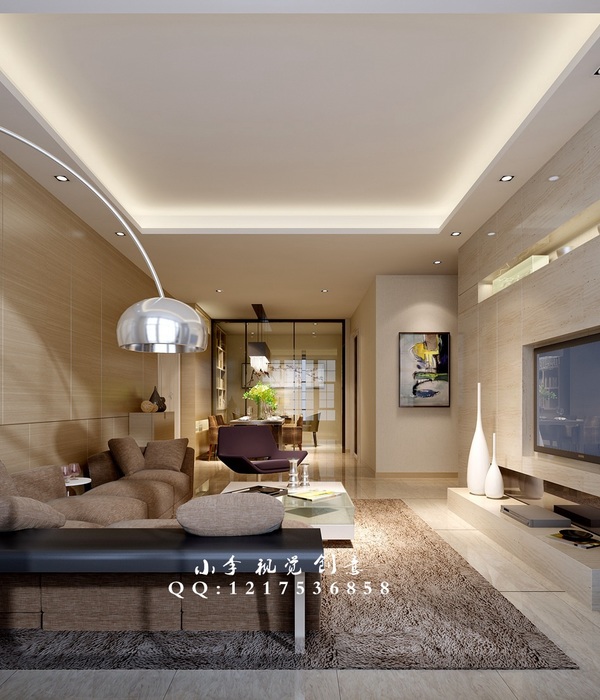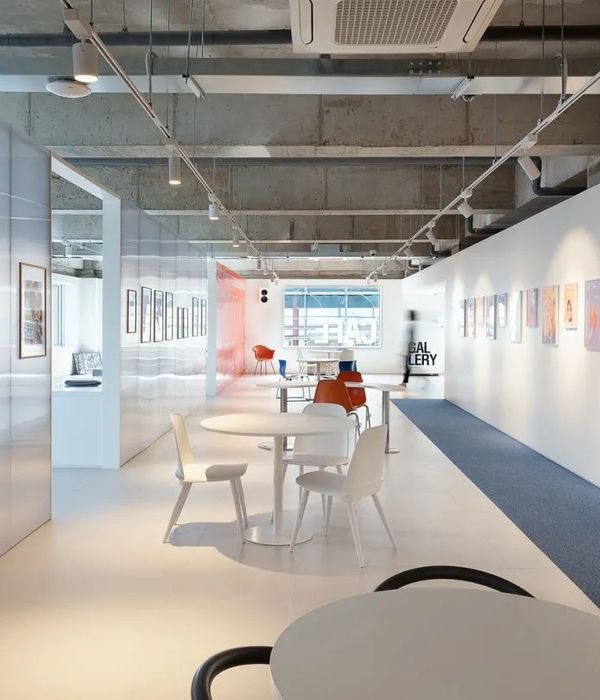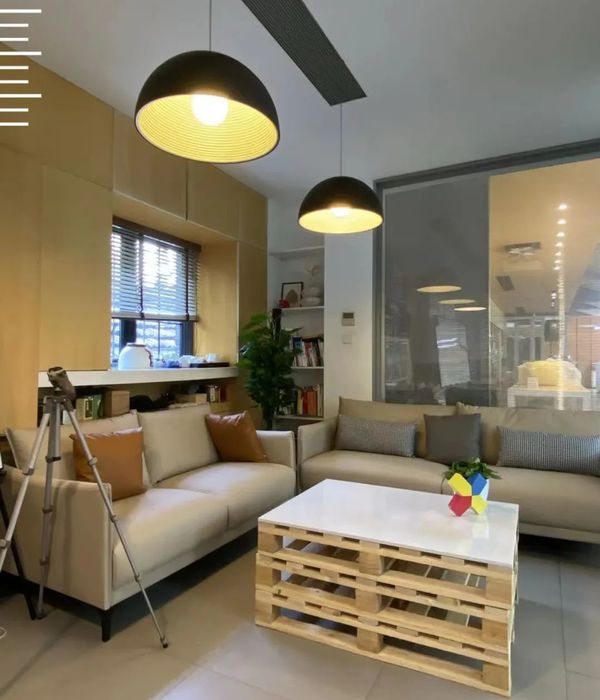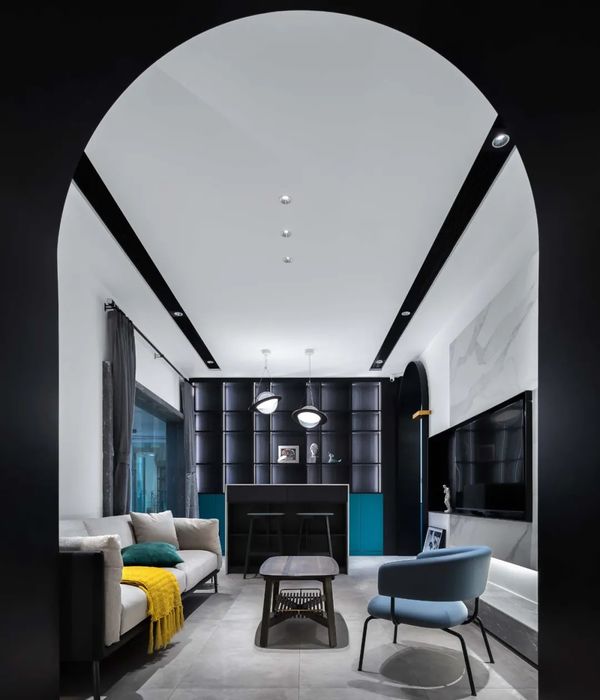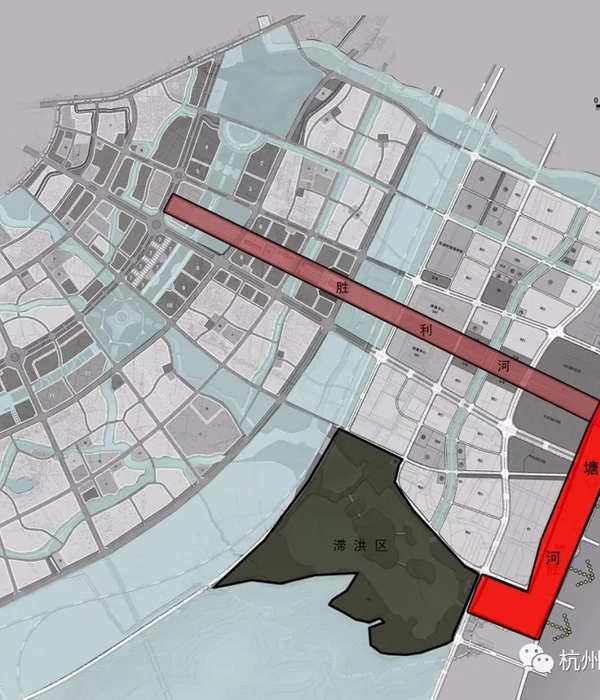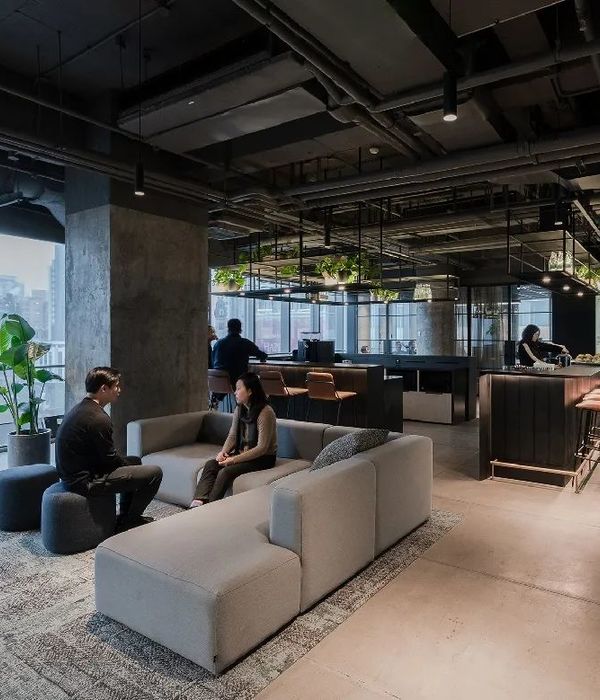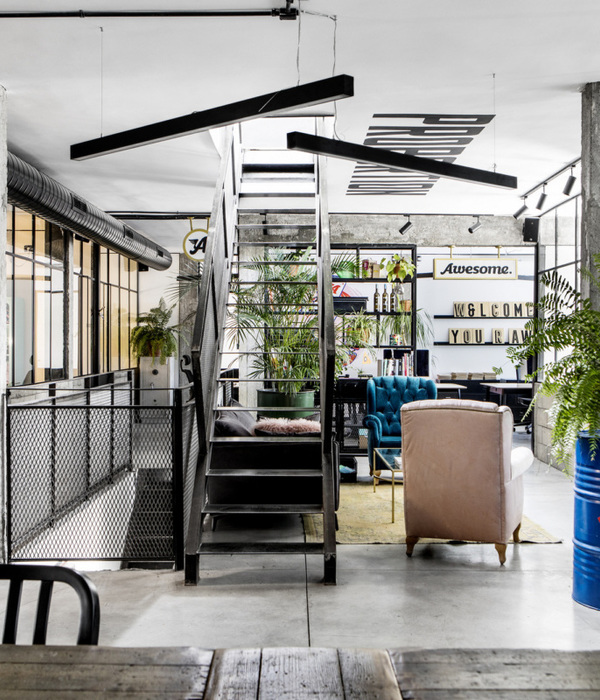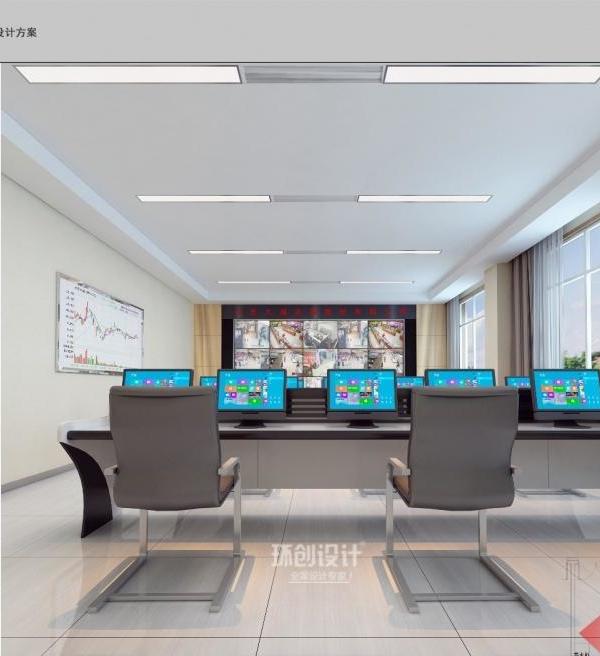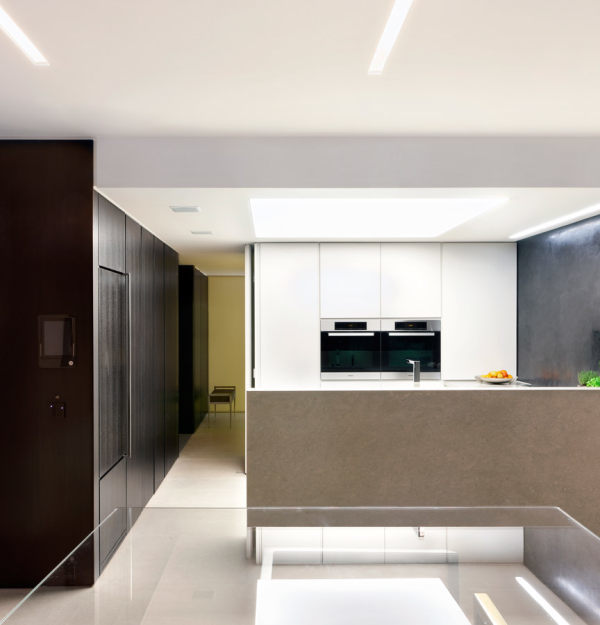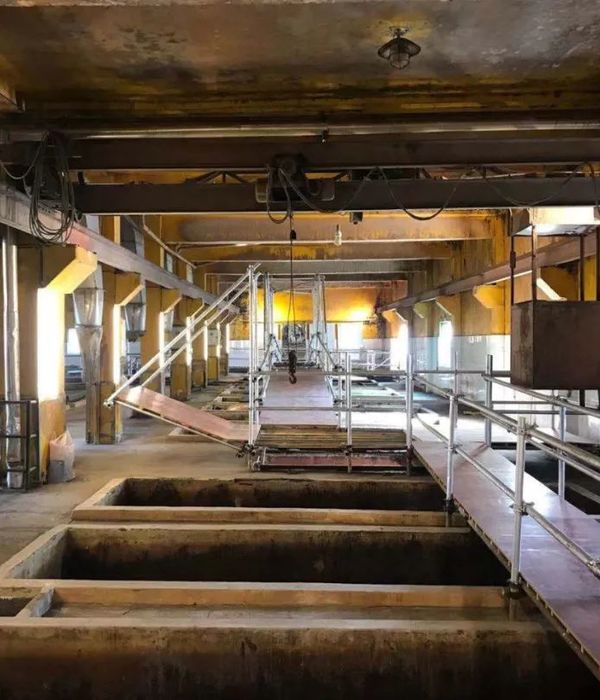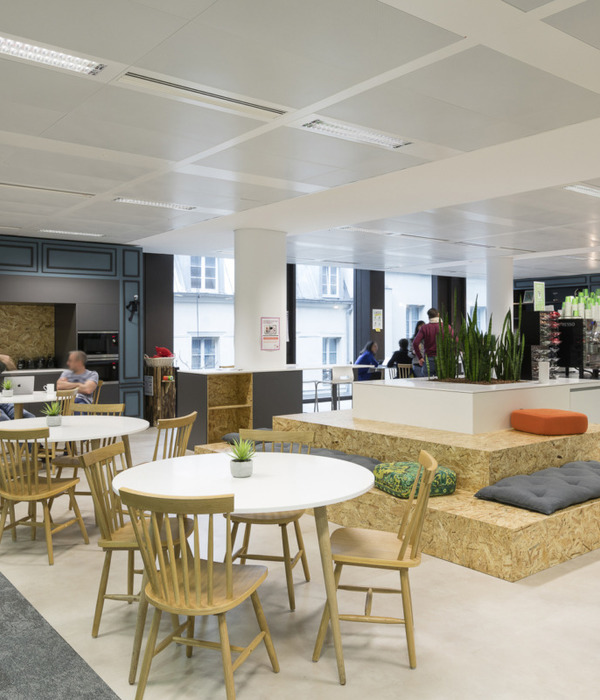哥本哈根暴雨应对策略 | 蓝绿基础设施的生态水景设计
项目陈述 PROJECT STATEMENT
2011年的一场倾盆暴雨让哥本哈根蒙受了将近十亿美金的损失,也使针对当前气候变化的缓解性措施成为了城市下一步发展计划的重中之重。这场殃及各个管辖领域的洪灾促使规划师、工程师、经济学家、普通市民、设备供应商、政治家与投资人展开了一次真正意义上的跨领域合作,协力将气候适应性方案整合入控规之中。
哥本哈根暴雨应对行为准则正是诞生于这次合作之中。这套以可靠的投资策略为基础,结合了城市规划、交通系统与水力分析的蓝绿系统将能够灵活的应对因气候变化而愈发频繁出现的极端暴雨、洪涝灾害,进一步优化城市居住环境与质量。
城市公共空间是一种宝贵的资源。以一片10平方公里集水区为例的成本效益分析显示,相比单独依靠排水管道系统应对暴雨灾害,将地表面引入到策略中作为排水系统的其中一个环节将节省超过2亿美金的投资经费。
这种雨水下渗的处理方式在城市内超过300个先行项目中先后实施,当地开发商将雨洪管理设计准则整合入设计要求之中,同时哥本哈根暴雨应对行为准则的普适性也在欧、美、亚各地的设计方案中得到了验证。
Following a 2011 Cloudburst that caused damage of approximately USD $1 billion, climate change mitigation solutions became an urgent focus for the city of Copenhagen. The flood’s consequences transcended jurisdictional boundaries, necessitating a truly collaborative effort be established between planners, engineers, economists, citizens, utility providers, politicians, and investors to integrate Climate Adaptation within regulatory planning.
The result is the Copenhagen Cloudburst Formula, a flexible, universally adaptable model for mitigating increasingly common extreme flood events – or Cloudbursts – through Blue-Green solutions that integrate urban planning, traffic, and hydraulic analysis with sound investment strategies to improve the quality of cities’ Liveability.
Existing city space is valuable. A cost-benefit analysis, conducted on the 10km2 catchment, concluded that the potential of implementing a surface-first approach to mitigating Cloudbursts over solely pipe-based systems reduced investment costs by over $200 million.
The trickle-down effect has been the identification of over 300 citywide pilot projects, the incorporation of flood management design guidelines within local developer requirements, and the testing of the Copenhagen Cloudburst Formula applicability throughout Europe, the Americas, and Asia.

△ 城市秩序的拐点 Game changer
2011年7月,一场毁灭性的大雨袭击了哥本哈根,5万户居民受此影响在一周的时间无法使用热水,保险公司收到了超过9万份保险索赔,因财产损失、交通延误和生产中断带来的损失高达10亿美金。
July, 2011 – Copenhagen was hit by a destructive Cloudburst leaving 50,000 homes without heat for a week, impacting over 90,000 insurance claims, and causing upwards of USD $1 billion in property damage, transport delays, and production halts.
Photo Credit: Ramboll and Ramboll Studio Dreiseitl
项目说明 PROJECT NARRATIVE
无论对哪一个国家来说,由气候变化引起的极端天气状况都已不再是一个可以逃避、忽视的话题。
2011年7月2日,一场千年一遇的暴雨突如其来,150mm的降雨量在两小时内便让1米深的洪水淹没了哥本哈根城区的大部分地区。此前,在2010年八月,百年一遇的暴雨便已袭击过哥本哈根,而无独有偶,2014年大雨再次到来。如期而至的暴雨让哥本哈根意识到这不再是偶然现象,雪上加霜的是港口的海平面被预测在百年后将会上升一米之多。哥本哈根的雨污管道并无分离,而同时城市内的大量建筑空间与服务设施都位于街道平面之下,这也意味着每当洪水来临,大量的生活污水也会随之流入建筑与城市基础设施之中。
以创新的方法提供实用的解决方案
由于大量设备占据了地下空间,诸如地下水库一类古老的排水措施已不可能在当今城市中实现。然而传统的管道系统又无法承受难以预测的极端天气带来的排水压力。
与被普遍认为是纯技术、深埋地底不见天日的传统市政基础设施相比,暴露于阳光下的蓝绿系统以其低技术含量和高互动性著称。蓝绿策略在有限的城市空间内,将绿地和水系两种具有气候变化适应性的空间联系在一起,相辅相成,发挥了各自的最大功效。
自2011年洪灾后,哥本哈根具体化措施肩负起了应对气候变化的重任。这些相互协调的跨学科措施用根据不同地形建立的暴雨“工具箱”,填补了规划与具体场地针对性措施之间的空白。
这些策略被进一步整合为了哥本哈根暴雨应对行为准则,只需仅仅六个步骤便能将蓝绿措施结合到设计之中:
1. 数据收集与调查:根据暴雨风险指标,城市将调查、鉴定并依次排列不同地区的受威胁程度,拉动投资、影响地块价值的可能性,以及策略实施对相邻地块开发的影响程度。
2. 建立模型与绘制地图:各行政区将其领域划分为不同的暴雨集水区,通过建立包括地理信息系统、地表水、污水系统、地貌特征、风险评估在内的大型水文模型来确定出脆弱区域。在这些区域中,仅依靠传统管道系统远远不足,而公共自来水公司则开始资助包含有暴雨管理措施的相关项目。
3. 无措施的花销:气候变化所带来的影响之大令人咋舌,经政府与专业顾问公司分析、计算,即使不采取任何措施,至2110年每年应对其的花费也将高达6-9千万美金。
4. 设计与资格:重点区域将被标识出来,将策略性的规划方案转化为人类尺度的空间体验,并为其他城市减缓暴雨以及应对日常降雨提供范例。而“暴雨工具箱”也将成为一个具有普适性,灵活性的多功能设计手法库。
5. 参与与互动:暴雨会影响到哥本哈根的每一个角落,一套为公众参与而设计的全面策略应运而生,让每一位可能收到影响的普通公民也能就此出谋划策。
6. 暴雨经济:团队针对两种截然不同的规划方案给出了详细的成本效益分析报告。以高比例蓝绿策略和低比例市政管道改造组合而成的规划方案相较于传统的规划方案将节省近50%的花费。而随之而来的在居民健康、环境和城市空间质量的提升将进一步提升其经济效应。
具体实施:
团队选择了Lådegåds-Åen,一块占地10平方公里,位于哥本哈根市中心并有着极大潜在洪水风险的流域作为向世人展示“暴雨工具箱”中改良式设计手法的示范区。于地表建造的各种蓝绿技术成为了引人注目而极具互动性的城市元素。所有的设计都以当地的具体情况为依据,与现存的地下基础设施相辅相成。
两个规划方案被放在一起相互比较各自的长处与短处。同样跨越了街道、步行道、建筑和火车路轨等城市“屏障”,同样以些微的高差阻止洪水直接由哥本哈根港口主排水口直接涌向大海,两个方案最大的不同点在于对Sankt Jørgens湖的处理方式之上。
传统手法的设计方案保留了Sankt Jørgens的现状,这之中固然有其不可磨灭的文化意义,然而湖面的高度已高出街道平面,在雨天往往洪水泛滥,只能依靠新建一条直径5米的排水管道将洪水引入港口。与蓝绿方案相比,需要两倍的土地面积与投入才能满足其相应的工程技术要求,同时也限制了新的公共绿色空间的发展。
与之相反,蓝绿规划方案中湖面的高度从5.8米降至了2.8米,这位暴雨创造了4万立方米的存储空间,同时也让曾经片段化的湖岸空间重新联系在了一起。多余的湖水将通过一个直径仅为2.5米的管道流入港口。团队在设计中将蓝、绿措施与传统的灰色管道系统相连接,在绿地与基础设施中找到了平衡。而数字也将证明这一点。
蓝绿策略得到了经济方面的认证
传统规划方案的性能总净值高达7.8千万美金,蓝绿规划方案的性能总净值更是将近其两倍,高达1.42亿美金。而由于其对居民身体素质的提高以及极端天气对更大尺度GDP的影响尚未计入考虑,这个数值不过是保守估计,远远低于最终将会达到的总净值。此外,对暴雨天气的适应性设计将为保险公司节约大笔的赔偿金,同时也相应的提高了房地产的价值,对社会经济带来极大的推进作用。
如今,在政府部门、水务部门和投资方的鼓励下,诸如此类包含暴雨解决措施的跨领域协作项目已成为区域规划与发展的催化剂。而大量需要公众参与的工作坊让市民能够踊跃参与到其中,为自己所属区域的暴雨管理策略出谋划策。蓝绿策略在为未来都市建立生态型水景的同时,兼顾了社会经济的提升与发展。
公私合作带来的持续性影响
哥本哈根暴雨应对行为准则为已建成城市空间与蓝绿策略的融合同样提供了解决方案。
这些具有极高可行性的设计策略能够减缓极端暴雨天气带来的冲击,同时也进一步提升了城市景观的质量。而无论开发商还是小业主都将成为集合了设计师、规划师、社会学家、经济学家、生物学家、地理学家、信息系统专家、传播学家以及公共事业企业、利益相关者、利益集团、政治家和投资人等跨领域专家合作制定而出的当地策略的忠实拥护者。
暴雨解决措施的意义远远超出了简单的雨洪管理。策略性的洪水总体规划方案将在保卫哥本哈根的同时,为城市环境质量的提高打下坚实的基础。具有弹性的城市生态水景将为打造活力十足的公共空间提供平台,为城市经济的持久发展、生活质量的提高,以及城市的健康繁荣产生文化和社会意义两方面的巨大影响。
由于洪水往往不会波及河流的上游地区,而暴雨解决措施也往往被其居民所忽视。然而河流的上下游之间其实并没有边界。人们必须放下管辖区域的行政概念,建立跨区域的共同愿景。近日在哥本哈根郊区,有工程师与景观设计师合作建立的工作坊通过一系列互动式的活动,增强了民众对此的认识,同时也进一步了解了市民的需求。水力学的功能将以一种极富吸引力同时也具备教育功能的形式实现,在公共利益与个体的开发目标间找到平衡。
下一代的水利基础设施将整体考虑自然、城市与休闲娱乐空间,而蓝绿基建策略正是这个理念的最好体现。世界上的任何城市都能够从哥本哈根暴雨应对行为准则中找到将前沿而又可行的措施融入其城市现状空间的对应方案。现在,正是直面暴雨挑战,检测这套方法有效性的时候了!

△ 哥本哈根暴雨应对行为准则 Copenhagen Cloudburst Formula
结合少量管道基础设施的蓝绿策略,这套减缓暴雨影响,创造宜居城市的设计方法因其为社会经济带来的各种直接、间接利益,被证实相较于传统的管道铺设更值得投资。
A Liveable Cities approach for mitigating Cloudbursts – Blue-Green surface solutions with reduced piping infrastructure – is proven to be more investment friendly than piped solutions and creates diverse direct and indirect benefits for socio-economic conditions.
Photo Credit: Ramboll and Ramboll Studio Dreiseitl

△ 基于现状分析的解决方案 Analysis-Based Solutions
笼罩在洪水与海平面上升阴影下的Lådegåds-Åen流域被选为解决方案的试验区。哥本哈根暴雨应对行为准则与集合了城市灾害缓解策略和措施的“暴雨工具箱”诞生于完善而全面的场地分析中。
The Lådegåds-Åen catchment was selected as a prototypical test area due to its high risk to flooding and sea surges. Comprehensive site analysis led to establishing the Copenhagen Cloudburst Formula and a Cloudburst Toolkit of urban mitigation strategies and components.
Photo Credit: Ramboll and Ramboll Studio Dreiseitl

△ 共同的愿景 Common Vision
在Lådegåds-Åen流域内,一系列结合了暴雨措施的林荫道沿着现状河网蔓延,而同样沿着这些绿色廊道设置,引人注目而又极具互动性的暴雨缓解措施也为投资人指明了机会。
Within the Lådegåds-Åen catchment, a system of Cloudburst boulevards follow the ‘fingers’ of the existing river network, identifying opportunities for investment along green corridors where surface solutions ensure mitigation is visible, interactive. Payback = a vibrant, liveable city.
Photo Credit: Ramboll and Ramboll Studio Dreiseitl

△ 开发选项的评估 Evaluating Development Options
具有高比例蓝绿措施和较小管道尺寸的规划方案拥有更高质量的开放空间,低投入和更灵活的缓解措施。弹性的设计能够让现有基础设施和低技术解决方案更好的结合。
The masterplan with the highest concentration of Blue-Green Tools and reduced pipe sizes results in higher quality open spaces, lower investment costs, and more flexible mitigation strategies. Resiliency necessitates combining the best of existing infrastructure with low-tech solutions.
Photo Credit: Ramboll and Ramboll Studio Dreiseitl

△ 思维方式的变革 Change of Thinking
即使不采取任何措施,哥本哈根每年也会因为极端天气损失6千万美金。而公园则能让相邻的房产增值10%-15%,既能增加经济收入,又能减缓暴雨灾害的可靠解决方案势在必行。The cost of doing nothing creates losses of $60 million a year (City of Copenhagen). Let’s create robust solutions that add value and mitigate Cloudbursts. Parks are proven to increase property value 10-15% (Source: Trust for Public Land).
Photo Credit: Ramboll and Ramboll Studio Dreiseitl

△ 公司合作模式 Public-Private Collaboration
哥本哈根暴雨应对行为准则采用了多元科际研究法,防止孤立的思维方式。工程师、水力学家、地理信息系统和信息技术专家、建筑师、规划师、生物学家、经济学家、传播学家、景观建筑师与当地的市民、投资人和政客合作,共同规划未来。
The Copenhagen Formula adapts interdisciplinary approaches, moving away from silo-ist, isolated thinking. A common vision aligned engineers, hydraulic experts, GIS and information technologists, architects, planners, biologists, economists, communication specialists, and landscape architects with local citizens, investors, and politicians.
Photo Credit: Ramboll and Ramboll Studio Dreiseitl

△ “暴雨工具箱”Cloudburst Toolkit
针对街道、公园和广场等城市常见空间模式,团队给出了八种介入手段以减缓灾害。“暴雨工具箱”将水力工程(灰色)与城市生态工程(蓝绿)相结合,创造了一套普适性洪水缓解策略的模型。
Eight Urban Intervention Tools were developed to mitigate common urban typologies – streets, parks, and plazas. The Cloudburst Toolkit combines hydraulic engineering (the ‘Grey’) with urban ecological engineering (the ‘Blue-Green’), establishing a model for universally-applicable flood mitigation strategies.
Photo Credit: Ramboll and Ramboll Studio Dreiseitl

△ 被选中的介入点 Selective Intervention
工程师和景观建筑师从城市中选择出适合从“暴雨工具箱”选择手段介入的具体区域。针对先行区具体情况而选出的介入手段同时也以展现出在相应城市空间实施的可能性。
Hot Spots (sites suitable for implementing the “Cloudburst Toolkit”) were identified by the Engineer and Landscape Architect. Each tool is shown to demonstrate its applicability within the Pilot Project area as well as universal applicability as typology-based solutions.
Photo Credit: Ramboll and Ramboll Studio Dreiseitl

△ 介入手段:绿色街道Tool: Green Streets
绿色街道措施利用城市街道的高差创造出“安全通行路段”与“洪水淹没区”。行人、自行车、摩托车和其他交通出行方式沿着公共空间依次展开。这些措施同时也起着教育公众的作用。
Green Streets utilise lowered street profiles to create a ‘Safety Zone’ and a ‘Flood Pathway’ corridor. Shared public spaces integrate pedestrians, cyclists, motorists, and alternative transportation along a common public realm. Solutions are visible public education tools.
Photo Credit: Ramboll and Ramboll Studio Dreiseitl

△ 介入手段:V形城市运河 Tool: Urban Canal ‘V-Profile’
V形的城市道路截面挑战了传统的交通工程,通过改变截面的走向将传统街道改良为暴雨适应性街道。这种改变不仅减少了道路所占的空间,同时也增加了道路的滞水能力,同时应对日常与极端暴雨天气状况。
A V-Shaped road profile challenges conventional traffic engineering, retrofitting Cloudburst Streets by ‘flipping’ street layouts. The radical change allows street widths to be reduced while increasing retention capacity to handle daily and extreme rain events.
Photo Credit: Ramboll and Ramboll Studio Dreiseitl

△ 拉动投资 Driving Investment
蓝绿基础设施将为运营和维护节约近75%的空间,由丹麦咨询公司计算得出,通过实行蓝绿解决措施,配以小型的传统管道,能节约2亿美金的投入。
Blue-Green infrastructure helped to lower capital, operational, and maintenance spaces by as much as 75% (Source: American Rivers 2012) while Danish Consultants calculated that USD $200 million investment costs could be saved by combining Blue-Green solutions with minimized conventional piping.
Photo Credit: Ramboll and Ramboll Studio Dreiseitl

△ 理论的试验 Testing Theories
现状的湖水平面高于周围的绿地空间。通过移除水岸区的物理障碍,通过地下通道连接,并将蓝绿技术与灰色的管道系统相结合,团队在为居民创造全新公共空间的同时缓解了洪水外溢的现象。
The lake currently lies higher than surrounding green spaces. Removing the physical barrier to the waterfront, creating a bypass tunnel, and combining ‘Blue-Green’ techniques with ‘Grey’ piping creates a new place for people while mitigating flood event overflow.
Photo Credit: Ramboll and Ramboll Studio Dreiseitl

△ 哥本哈根暴雨应对行为准则的实施 Applying the Copenhagen Formula
可进入的多功能水岸创造了生物栖息地、沙滩和各式各样的休闲空间,同时也维持并改良了现状的城市结构。在极端天气状况下,水体可以暂时容纳大量的洪水,从而保护周边的区域不被洪水侵蚀。
Multi-functional edges with accessible waterfronts, creating habitat zones paired with beach and recreational program while retaining and improving existing urban structure. Even during rare Cloudbursts, the lake provides flood storage and protects surrounding areas from flooding.
Photo Credit: Ramboll and Ramboll Studio Dreiseitl

△ 一个全新的经典目的地 A New ‘Old’ Destination
湖区变成了一个拥有休息娱乐、健身和传统遗存的多功能公园空间,兼顾高效的空间利用,应对暴雨和日常的降雨,并吸引居民和游客加入到活力十足的湖岸活动之中。
The lake becomes a multifunctional park space with recreation, fitness, and heritage amenities that capitalize space use, simultaneously mitigate Cloudbursts and normal rain events, and beckons residents and guests to engage with the active waterfront edge.
Photo Credit: Ramboll and Ramboll Studio Dreiseitl
PROJECT NARRATIVE
Globally, the impact of climate change is an issue that can no longer be ignored.
On the 2nd of July 2011, in less than two hours, Copenhagen was hit by an extreme 1000-year storm event – or Cloudburst – where 150mm of rain left large areas of the city under up to one meter of water. The 2011 event had been preceded by a 100-year storm in August 2010 and was hit again in 2014. Copenhagen realized that Cloudbursts were not a one-off occurrence; the threat compounds as harbor sea levels are predicted to rise one meter by 2110. In a city where many buildings and services are located below street level and where stormwater and sewage are in a combined pipe system, contaminated floodwater penetrated buildings and city infrastructure.
INNOVATIVE METHODOLOGY WITH PRAGMATIC SOLUTIONS:
Traditional drainage solutions such as underground reservoirs are becoming less viable as utilities occupy more underground space. Extreme weather events cannot be managed by conventional pipe systems and their occurrence becomes more difficult to predict.
Conventional infrastructure is considered to be generally technical, underground, hidden elements while Blue-Green solutions are low-tech, on the surface, and interactive. The Blue-Green Approach develops a synergistic relationship between the two, integrating climate adaptation solutions within the limited confines of urban space, encouraging a solution utilizing the best of both techniques.
The Copenhagen Concretization Plans were commissioned to combat climate change following 2011’s flood. These integrated, multi-disciplinary plans bridge the gap between planning and site-specific solutions through the application of a typology-based Cloudburst Toolkit.
The process was formalized as the Copenhagen Cloudburst Formula, a six-step procedure for integrating the Blue-Green Approach:
1. Data and Investigation: The city investigated, identified, and ranked areas according to their overall threat due to Cloudburst risk indicators, their potential to stir investment and influence property value, and the viability of implementation affecting adjacent developments.
2. Modeling and Mapping: Municipalities divided their regions into stormwater catchments, undertaking large-scale hydrological models (including GIS, surface water, sewage, landscape character, risk assessments) to map vulnerable areas. The conclusion – traditional piped solutions alone were not enough. The result – public water utility companies began financing solutions that integrated Cloudburst events.
3. Cost of Doing Nothing: An analysis undertaken by the city and consultants calculated that the effect of climate change was so large, that the cost of doing nothing would amount to approximately $60-90 million a year from now to 2110.
4. Design and Qualify: Hotspots were identified, transferring strategic planning to human-scale experiences as a model for how other cities can mitigate Cloudbursts and daily rain events. The “Cloudburst Toolkit” was developed as a palette of universally applicable, multi-functional, flexible elements.
5. Involvement and Iteration: Cloudbursts would influence each area of Copenhagen; an overall strategy for a public participation program was established to gauge the requirements of the citizens who would be affected.
6. Cloudburst Economics: A detailed socio-economic Cost-Benefit Analysis (CBA) tested two masterplan options. The option with the highest percentage of Blue-Green solutions and also the least additional infrastructural pipe improvements created a potential savings 50% greater than Conventional solutions alone. Additional qualitative social benefits, such as health, environmental, and urban spatial quality improvements resulting from the enhancements would potentially push this number even higher.
APPLICATION:
Demonstrating the relevance of the Cloudburst Toolkit palette of retrofit techniques on the first selected Hot Spot of the 10 km2 catchment of Lådegåds-Åen (a priority catchment set in the center of Copenhagen and at a high risk to flooding) investment opportunities in the form of Blue-Green techniques were created on the surface where they are visible, interactive urban components. The solutions are based on real situations, aligned to preexisting underground infrastructure.
Two masterplan variations were developed to assess potential advantages and disadvantages – Option 1 Conventional and Option 2 Blue-Green. Crisscrossed by a number of constructed urban barriers (such as streets, sidewalks, buildings, or train tracks) and with only minimal grade differences that prevent floodwaters from positively draining towards the main Copenhagen harbor outlet point into the sea, the key difference between the two options is the strategy for mitigating Sankt Jørgens Lake.
The Conventional Masterplan Option retained Sankt Jørgens Lake as it exists; there is cultural value in keeping the historical layout yet the lake currently lies above the surrounding street level and floods during rain events, requiring the creation of a new 5m diameter pipe to funnel flood water to the harbor. The technical engineering investment is calculated at twice the size and cost of the pipes required for the Blue-Green Option, and also creates limited new public green space.
In contrast, the Blue-Green Masterplan Option lowered the lake level from +5.8m to +2.8m, creating a new Cloudburst storage volume of 40,000m3 and a revitalized lakeside connection which had previously been only partially accessible. The lake overflows into a 2.5m diameter tunnel to the harbor as a reduced sized pipe. The solution combines the Blue-Green with the Grey (conventional) piped solution to result in a harmony between infrastructure and green space. But what do the numbers say?
BLUE-GREEN SOLUTIONS MAKE FINANCIAL SENSE:
The Conventional Masterplan has a total net performance value (NPV) €78 million while the Blue-Green Option is almost twice as effective at an NPV of €142 million. This estimate can even be considered conservative when the qualitative health benefits or the macro-scale loss of GDP caused by extreme flooding are further calculated. The insurance damage savings and the increase in real estate value are two of the highest socio-economic benefits from Cloudburst adaptation.
Today we are seeing Cloudburst solutions implemented in local plans where synergy projects are encouraged between municipalities, water utilities, and philanthropists as catalysts for development. Public participation workshops encourage and allow citizens to actively shape their municipality’s Cloudburst strategy. Blue-Green is the future for establishing urban ecological waterscapes while balancing sound investment and economic opportunities with social benefit improvements.
PUBLIC-PRIVATE ENGAGEMENT – LASTING BENEFITS:
The Copenhagen Formula provides a structure for integrating built, existing context with retrofit Blue-Green solutions.
The implementable, pragmatic tools mitigate extreme storm events and improve our cityscapes. Private developers and homeowners alike become champions for local solutions where a multi-disciplinary, cross-agency collaboration engaged designers, planners, sociologists, economists, biologists, geographers, information specialists, and communication experts interacting with public utility companies, stakeholders, interest groups, local politicians, and investors.
Cloudburst solutions are often left out of upstream area planning where residents see no flooding problems. Yet water has no boundary. Municipal borders must be lowered to develop a common vision across disparate districts. A recent interactive workshop led by the Engineer and Landscape Architect in a suburb of Copenhagen engaged residents through a series of interactive sessions designed to raise awareness and survey desired citizen interests. Hydraulic function was presented in an engaging, educational sequence that involved the public interest with private development goals.
Cloudburst solutions can provide much more than just stormwater management. The strategic flood masterplan is the opportunity to safeguard Copenhagen while providing the foundations for a high quality city environment. Resilient urban ecological waterscapes are the foundation for vibrant public realm spaces that are culturally and socially significant and contribute to the economic longevity, quality of life, and well-being of cities.
Blue-Green Infrastructure represents the next generation of water infrastructure considerations where nature, city and recreational space are rolled into a holistic package. Cities around the world can look to the Copenhagen Cloudburst Formula as a model for implementing innovative, pragmatic, feasible measures within existing urban fabric. It’s time to test the method and take on the Cloudburst Challenge!
Project Directors:
Christian Nyerup Nielsen, Head of Department, Ramboll Urban Water and Climate Adaptation
Jesper Rasmussen, Senior Project Manager, Ramboll
Dieter Grau, Executive Partner, Ramboll Studio Dreiseitl
Gerhard Hauber, Executive Partner, Ramboll Studio Dreiseitl
Project Managers:
Jesper Rasmussen, Senior Project Manager, Ramboll
Sonia Sørensen, Senior Project Manager, Ramboll
Jessica Read, Senior Associate, Ramboll Studio Dreiseitl
Chaojun Li, Ramboll Studio Dreiseitl
Lead Landscape Architects and Urban Planners:
Hendrik Porst, Director of Design, Ramboll Studio Dreiseitl
Jessica Read, Senior Associate, Ramboll Studio Dreiseitl
General Cloudburst Master Planning Initiatives:
Administered by Mayor for technical and environmental affairs, Morten Kabell
General cloudburst masterplan with catchments of Copenhagen and Frederiksberg (basis for the specific master planning and project identification)
City Copenhagen and Greater Copenhagen Utilities (HOFOR) assisted by COWI
Approach, Vision and concepts of 3 masterplans covering more than half of 300+ projects in Copenhagen and Frederiksberg:
City Copenhagen
Greater Copenhagen Utilities (Hofor)
City of Fredriksberg
Fredriksberg Utilities
Ramboll
Ramboll Studio Dreiseitl
City of Copenhagen: Palle Dannemand Sørensen, Jan Rasmussen and Lykke Leonardsen:
Greater Copenhagen Utilities (HOFOR): Margit Lund Christensen, Nis Fink and Jes Clauson-Kaas
City of Frederiksberg: Susanne Jakobsen (now HOFOR)
Frederiksberg Utilities: Mikael Koopmann
Ramboll: Camilla Julie Hvid, Jesper Rasmussen, Christian Nyerup Nielsen
Ramboll Studio Dreiseitl: Dieter Grau, Hendrik Porst, Stefan Brückmann, Jessica Read
Hydraulic Planning and Design Lead:
Christian Nyerup Nielsen, Head of Department, Ramboll Urban Water and Climate Adaptation
Jesper Rasmussen, Senior Project Manager, Ramboll
Stefan Brueckmann, Director of Urban Hydrology, Ramboll Studio Dreiseitl
Hydraulic Modeling and Risk Mapping:
Christian Nyerup Nielsen, Head of Department, Ramboll Urban Water and Climate Adaptation
Henrik Thoren, Ramboll
Henrik Sonderup, Ramboll
Gitte Schnipper, Ramboll
Trine Munk, Ramboll
Adelina Iancu, Ramboll
Alexandra Ioan, Ramboll
Linda Bredahl, Ramboll
Constantin Moeller, Ramboll Studio Dreiseitl
Nengshi Zheng, Ramboll Studio Dreiseitl
Water Quality Modeling:
Henning Schmidt Nielsen, Ramboll
Linda Bredahl, Ramboll
Traffic and Infrastructure:
Jesper Rasmussen, Senior Project Manager, Ramboll
Jens Richard Olsen, Ramboll
Kasper Wulff, Ramboll
Tunnel Design:
Torsten Ask
CBA and Socio-Economic Analysis:
Henrik Rosenberg Seiding, Executive Director, Ramboll Management Consulting
Henrik Stener Pedersen, Business Manager, Ramboll Management Consulting
Jonathan Leonardsen, Ramboll Management Consulting
Henning Thomsen, Ramboll
Multidisciplinary Participation Workshops:
Christian Nyerup Nielsen, Head of Department, Ramboll Urban Water and Climate Adaptation
Jesper Rasmussen, Senior Project Manager, Ramboll
Sonia Sørensen, Senior Project Manager, Ramboll
Ann-Sofie Jakobsen, Ramboll
Camilla Julie Hvid, Ramboll
Graphic Production:
Ramboll Studio Dreiseitl Global – Mariusz Hermansdorfer, Chaojun Li, Jeremy Anterola, Josephine Flood, Sebastian Walker, Bernd Schernau, Julia Dreiseitl, Gustavo Glaeser, Jay Coro
Ramboll – Camilla Julie Hvid, Pernille Egegaard, Neil Hugh Goring
MORE:
Ramboll
and
Ramboll Studio Dreiseitl
,更多请至:


